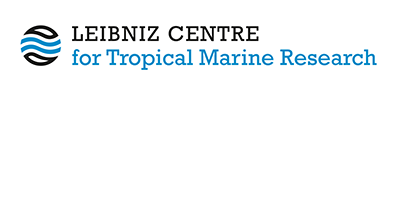Sediment, Substrate, and Structure: Factors Shaping Algal Turf Dynamics in Urban Indonesian Reefs.
Syafruddin, Gunawan, Estradivari,  ORCID: https://orcid.org/0000-0002-2789-8522, Pratama, Andi M.A., Yasir, Inayah, Ferse, Sebastian
ORCID: https://orcid.org/0000-0002-2789-8522, Pratama, Andi M.A., Yasir, Inayah, Ferse, Sebastian  ORCID: https://orcid.org/0000-0003-0930-5356 and Ambo-Rappe, Rohani
(2025)
Sediment, Substrate, and Structure: Factors Shaping Algal Turf Dynamics in Urban Indonesian Reefs.
Regional Studies in Marine Science
.
p. 104172.
DOI https://doi.org/10.1016/j.rsma.2025.104172.
ORCID: https://orcid.org/0000-0003-0930-5356 and Ambo-Rappe, Rohani
(2025)
Sediment, Substrate, and Structure: Factors Shaping Algal Turf Dynamics in Urban Indonesian Reefs.
Regional Studies in Marine Science
.
p. 104172.
DOI https://doi.org/10.1016/j.rsma.2025.104172.
|
Text
Estradivari.pdf - Published Version Available under License Creative Commons: Attribution 4.0. Download (4MB) |
Abstract
Algal turfs significantly influence coral reef ecosystems by impacting benthic community structure and overall reef health through sediment trapping and accumulation, which are vital for nutrient retention and sediment stabilization. This study examines the spatial dynamics of algal turf height and sediment thickness across eight sites in the Spermonde Archipelago, South Sulawesi, Indonesia, covering an inshore-offshore gradient (1–62 km) from reefs near urbanized Makassar city to remote reefs. Measurements of algal turf height and sediment thickness on hard substrates and coral rubble at two depths revealed a clear inshore-offshore pattern. Reefs closer to the mainland had taller algal turfs and thicker sediment layers, transitioning from long sediment-laden algal turfs (LSATs) inshore to short productive algal turfs (SPATs) offshore. Algal turfs were taller on coral rubble but had thicker sediment on hard substrates. The study showed that algal turf height had strong positive associations with both organic and inorganic sediment loads, sediment thickness, and substrate type, but was negatively associated with relative organic loads. Algal turf height was negatively correlated with reef rugosity, indicating taller algal turfs are found where reef complexity is lower, which characterized reefs closer to the mainland. These results highlight a dual role of algal turfs: increasing total sediment trapping (absolute loads) but favouring inorganic sediment deposition more than organic sediment deposition as height increases. Herbivorous fish biomass did not significantly correlate with algal turf height, suggesting that bottom-up factors, rather than top-down control, may play a more critical role in this area. These findings highlight the intricate interactions between anthropogenic influences, environmental stressors, and reef ecosystem dynamics in the Spermonde Archipelago.
| Document Type: | Article |
|---|---|
| Programme Area: | PA1 |
| Research affiliation: | Science Management > Office for Knowledge Exchange Ecology > Fish Ecology and Evolution |
| Refereed: | Yes |
| Open Access Journal?: | No |
| DOI: | https://doi.org/10.1016/j.rsma.2025.104172 |
| ISSN: | 23524855 |
| Date Deposited: | 07 May 2025 16:21 |
| Last Modified: | 07 May 2025 16:21 |
| URI: | https://cris.leibniz-zmt.de/id/eprint/5646 |
Actions (login required)
 |
View Item |





 Tools
Tools Tools
Tools